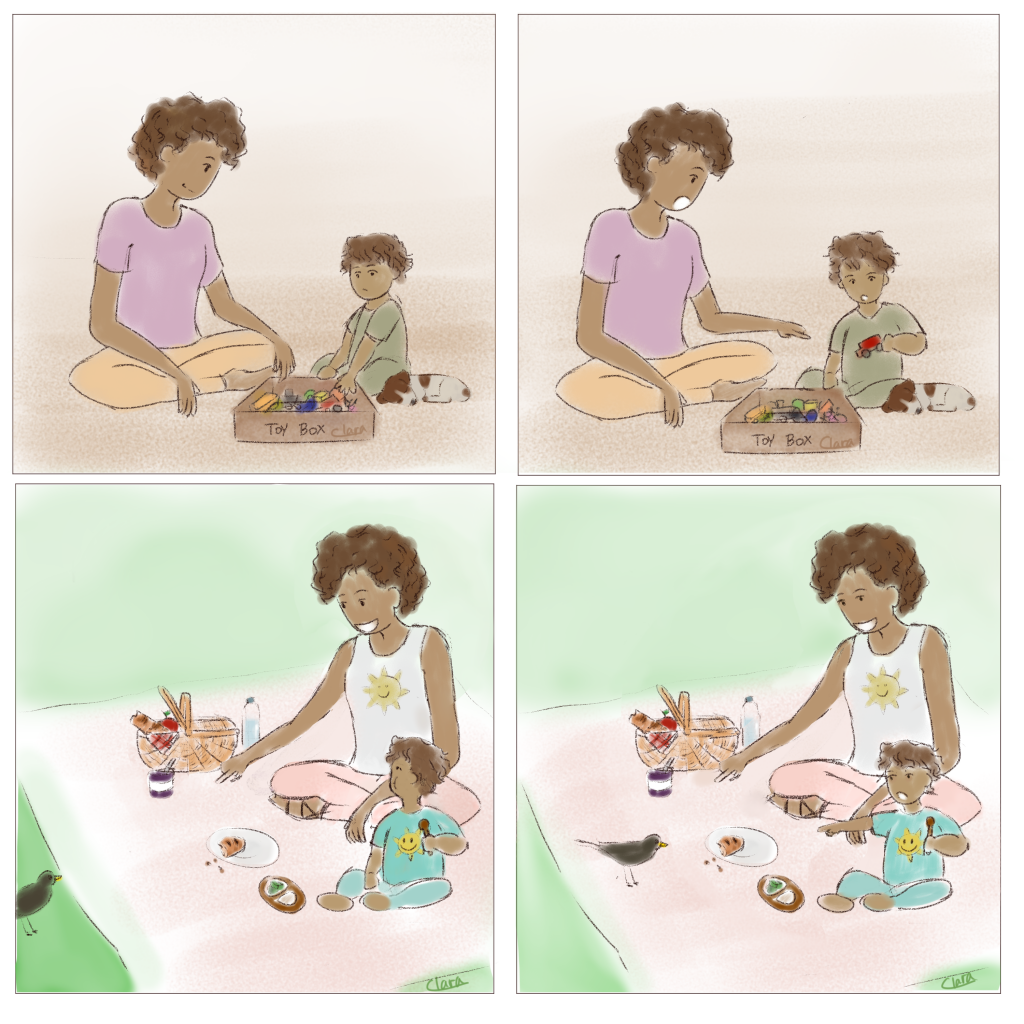How to foster word learning?

Imagine the moment a baby sees the world for the first time. All the sights and sounds that are just everyday happenings for us. A lot of learning about the world begins with joint attention. Moments when a child and a caregiver (or peer) interact with something in the world together, such as playing with a toy car or looking at a bird, are moments of joint attention (or paying attention together). Joint attention acts like a zoom lens, helping a child narrow down correspondences between language and the world. Just think how much easier it is to learn what “bird” means, in a picnic scene with a dog, sandwich, and bird, if someone is looking at or pointing to the bird!
Joint attention can be initiated by the child, who picks up a toy, and completed by a caregiver, who says “That’s my favourite car”. Or, it can be initiated by the caregiver, who points out a bird and says “Look! What a cute bird.”, and completed by the child, who looks over and smiles. A dash of child-initiated joint attention. A sprinkle of caregiver-initiated joint attention. Both are great, so mix and match!
Initiating or completing joint attention can be done by looking at, pointing at or grasping an object. And then complete as you like with some sentences about the object! We create and participate in joint attention all the time, so you are probably already doing this without realizing it!
Join us next time, when we move to interactions with preverbal babies!
The scientific sources of our comic:
